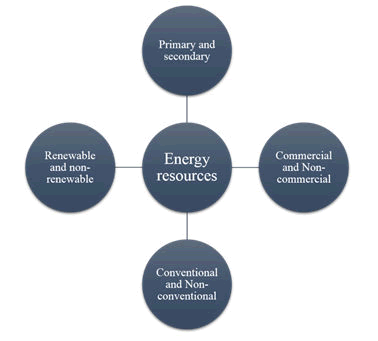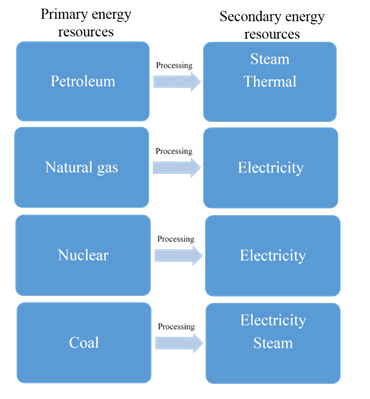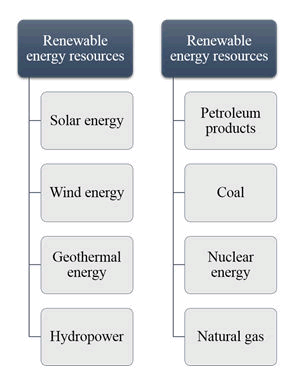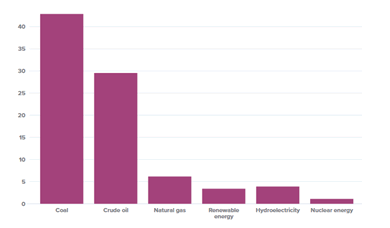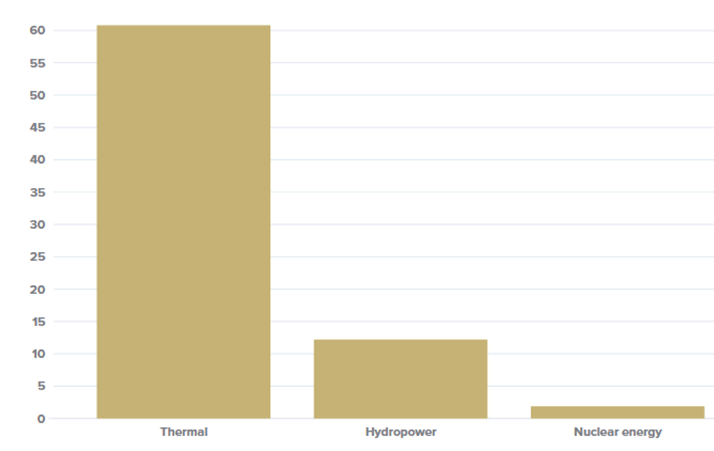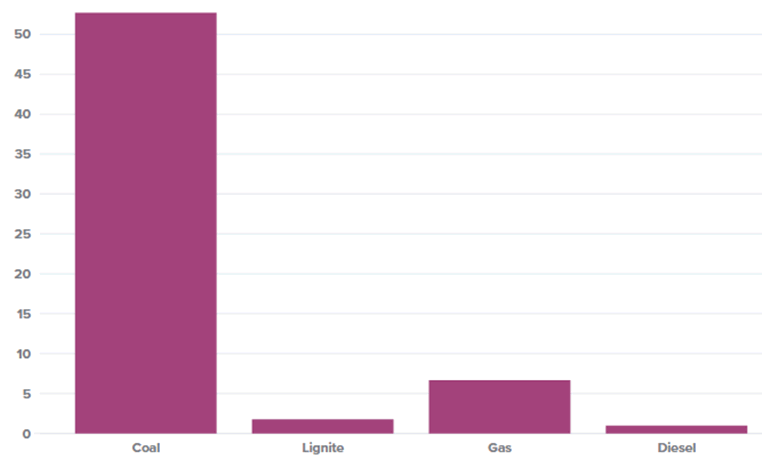Research Article, J Nucl Ene Sci Power Generat Technol Vol: 11 Issue: 5
An Overview of Energy Scenario in India
Prasanna Mishra1*, Simranjeet Singh2, Mohinder Pal3 and Krishnaraj Singh4
1Department of Automobile Engineering, PSG College of Technology, Coimbatore, Tamil Nadu, India
2Department of Environmental Science, SGT University, Gurugram, Haryana, India
3Department of Environmental Science, RIMT University, Mandi Gobindgarh, Punjab, India
4Department of Environmental Science, Sanskriti University, Mathura, Uttar Pradesh, India
*Corresponding Author: Prasanna Mishra, Department of Automobile Engineering, PSG College of Technology, Coimbatore, Tamil Nadu, India, Tel: 9490303888; E-mail:prasannamishra234@gmail.com
Received date: 03 November, 2021, Manuscript No. JNPGT-21-46573;
Editor assigned date: 05 November, 2021, PreQC No. JNPGT-21-46573 (PQ);
Reviewed date: 19 November, 2021, QC No. JNPGT-21-46573;
Revised date: 03 January 2022, Manuscript No. JNPGT-21-46573 (R);
Published date: 23 March 2022, DOI: 10.4172/2325-9809.1000274
Citation: Mishra P, Singh S, Pal M, Singh K (2022) An Overview of Energy Scenario in India. J Nucl Ene Sci Power Generat Technol 11:5.
Abstract
India is one of the major nations for consuming the energy at greater scale. The growing population of the country demand more energy in order to fulfill the need in terms of the energy consumption. India utilizes almost four percent of the total world’s energy consumption and it increases every year at significant rate. The energy is consumed by many sectors including industries, agriculture, and transportation and for the domestic activities such as household activities. Coal as well as fossil fuels are the leading energy resources in India that has been widely utilizes for the different sectors. Renewable energy resources are in growing stage and solar energy as well as hydropower is used for the electrical power generation. As compared to conventional drive resources, the utilization of sustainable drive resources is quite low. This review paper highlighted the energy scenario in Indian perspective. In the future, the utilization of the sustainable drive will help to fulfill the requirement of the electricity by growing population as well as reduce the air pollution significantly.
Keywords: Coal, Conventional energy resources, Electrical energy, Sustainable energy resources, Solar power
Introduction
India holds second position in among the all nations in terms of the population. Growing population demands more basic needs in order to survive and improve the quality of life. Among the all basic needs of the human, energy is one of the most fundamental element that is require in order to perform various tasks [1]. The growing demand of the energy in India is the biggest challenge. This is because of the limited availability of the energy resources. India depends on the non-renewable energy resources from many decades. Some of the most common traditional drive resources are fossil fuels, petroleum and nuclear energy etc. [2]. The energy resources are sometime utilized as a primary energy resources and sometime use to convert it into another energy resource such as electricity and steam. Majority of the electricity demand fulfill by the non-renewable energy resources. India holds the fourth position in the world in terms of the coal reserves of 8.6%. The major state of the coal producer in India is Jharkhand, West Bengal, Chhattisgarh, Orissa and Madhya Pradesh. Oil shares about 28.66% of the total resource ingesting in India. Some of the major Indian oil reserves are: Bombay high, Assam and Krishna-Godavari Basin [3].
Materials and Methods
Electricity is one of the major secondary energy resources that are utilized by the various sectors in India. Coal is considered as leading primary energy resources for producing the electricity in India. Based on the thermal energy, the electricity is generated by utilizing the coal. Approximately 202 k MW electricity is generated through the coal followed by the gas with 24 MW and lignite with 6.6 MW [4]. Form the one decade, the renewable energy resources are greatly utilized for the electricity generation. Major leading sustainable resources including solar power, hydropower and wind power etc.
Among the all energy resources, hydropower is used at larger scale for the production of the electricity in India. There are various large and small hydropower projects are running for the electricity generation [5]. Industry is the leading sector in terms of the energy consumption in India followed by the transportation, others, residential and agriculture etc. In order to give importance to the renewable recently, various solar energy parks established in various states for the electricity generation [6]. Due to high cost of the renewable energy resource based system, these energy resources are still lagging in order to utilize this technology at commercial level. The existence of these technologies is at very low scale. In order promote utilization of the renewable energy resources; more financial investment is requiring in order speeding up the research activities associated with the renewable energy resources [7].
This review paper provides an overview of the energy scenario in Indian perspective. This review paper will explore various energy resources as well as the contribution of each energy resources for the electricity generation. This review paper will also discuss about the current status of the renewable energy resource in India. Overall it will give complete overview about the status of the energy consumption in India.
Energy and its classification
Energy is considered one of the most fundamental elements that are requiring in order performing certain task. The energy can be classified in different groups based on the different factors, as illustrated in the Figure 1. These classifications usually based on the availability, usage and conversion. Each energy resource has its own importance because the utilization of each energy resource is sometime application specific.
Primary as well as secondary drive resources: Primary energy resources are the natural energy resources that are stored in the nature in the form of raw materials. Some of the most common primary energy sources are coal and fossil fuels. This class of the energy resources can be directly used in different sectors such as transportation. The primary energy resources can be utilizing in order to convert primary energy resources to another energy resource such as electricity and steam. The energy resources which are generated from the primary energy resources are generally refers to the secondary energy resources. Among the all secondary energy resource, electricity is the generated and consume at greater scale. The utilization of the electricity reduces the pollution significantly as compared to the primary energy resources because it doesn’t produce any kind of pollution. For example, electric vehicles produce negligible air pollution as compared to the vehicles running on petrol and diesel that is why electric vehicle demand is increasing day by day. Figure 2 illustrates the primary and their respective secondary energy resources.
Commercial and non-commercial energy resources: This class of the energy resources is defining by the cost. The energy resources which are available in the market for the utilization at some cost then this type of the energy resources are generally known as the commercial energy resources. For example, CNG, electricity and petroleum products. On the other, the energy resources which are available free of cost are generally known as the non-commercial energy resources such as Wood and solar energy etc.
Conventional and non-conventional energy resources: During the oil crisis, the energy resources that are utilized by the peoples are generally comes in the conventional energy resources category. For example, petroleum products and nuclear power. On the other hand, the energy resources that are utilized just after the oil crisis are generally known as the non-conventional energy resources.
Renewable as well as non-renewable drive resources: Amongst the all type of the classification, this classification has significant role in power resources. This classification of the energy resources is grounded on availability of the drive resources [8]. In recent years, it gained significant amount of attention of many researchers because of fine classification of the energy resources. Conventional resources are referred as the drive resources that as available in the nature in the limited quantity. For example, petrol, diesel, coal and nuclear energy etc. Humans are utilizing the non-renewable energy resources from many decades. 60% of the non-renewable energy resources already consumed [9]. The growing population demand more energy that is why the consumption of the non-renewable energy resources increasing at faster rate. The faster rate consumption of the traditional drive resources will lead to drive insecurity. This is the biggest challenge associated with the conventional resources. Another drawback of the non-renewable energy resource is air pollution. The combustion of the non-renewable energy resources emits various harmful as well as toxic gases to the environment that leads to the environmental damage. Some of the most common harmful gases are SO2, NOx as well as CO. These gases causing environment as well as climate damage [10].
In contrast, renewable energy resources are referring to the energy resources that are never run off in terms of the availability is generally known as the sustainable resources. Major examples of the sustainable energies are tidal power, solar power and geothermal power etc. The major advantage associated with the renewable energy resources is availibity and the second major advantage of the renewable energy resource is negligible air pollution. It doesn’t have any bad impact on the surroundings and environment. Now, many countries including developed as well as developing are focusing to utilize the renewable energy resource as world is facing climate change and global warming issues. In recent years, the production of the electricity based on the renewable energy resources increases at greater rate. The major renewable energy resources which are used for the electricity generation are solar energy and hydropower. The instances of the sustainable as well as conventional energy resources are shown in the Figure 3.
Results
Energy Scenario in India
Energy can be considered as the one of the most fundamental need for the humans as well as living organisms. Without energy, life is impossible. Sun is considered as one of the biggest energy resource that provides the energy to the humans as well as other living organisms from origin of the earth. The consumption of the energy is mainly depending upon the population and when the population increases the demand of the energy automatically increases. Since, India holds the second position in the world in terms of the population that is why the demand of the energy in India is also high. Among the all energy resources, electricity is greatly utilized. Currently, India is struggling to fulfill the demand of the electricity by growing population. The requirement of resources is mainly depending upon conventional energies but these drive resources are already consumed up to 60% that is why increasing rate of the non-renewable energy consumption can create many problems in the India. In India, coal contributes almost 56% of the overall primary energy generation. From the 1995 to 2005, the share of the natural gas raises from the 11% to the 14%. At the same time, the share of the petroleum products declined from the 21% to the 18% [11]. India holds the fourth position in terms of the production of the coal as well as lignite. The leading Indian states which produce the coal are highlighted in the Table 1.
| Rank | Indian state |
|---|---|
| 1 | Jharkhand |
| 2 | Orissa |
| 3 | Chhattisgarh |
| 4 | West Bengal |
| 5 | Madhya Pradesh |
Table 1: List of the leading Indian states in terms of the coal production.
The growing demand of the energy in India utilizes the primary energy resources at greater scale. The major advantage of these energy resources is potential to fulfill the demand of the energy at larger scale. Since it is available in limited quantity and more than 60% energy resources are already consumed that is why further utilization of the energy resources may create the energy security issue [12]. From last few years, Indian government focused on the energy efficiency and energy conservation so that energy security can be maintained. The energy consumption in is shown in the Figure 4.
Energy supply in India: Energy consumption in India continuously rising because of rapid increment in the inhabitant’s development. It has been noticed that form the last few years, the population growth rate in decreasing as compared to the earlier but the population of the country is still very high. The urbanization in India takes place at greater scale due to which the energy consumption is increases at faster rate. The supply of the various energy resources is listed in the Table 2.
| Energy resource | Description |
|---|---|
| Coal supply | Coal is considered as major energy resource in India. It is utilized as primary as well as secondary energy resource at greater scale. The major part of the electricity is generated by the coal. It holds approximately 42.89% of the total energy supply in the country. |
| Natural gas supply | Natural gas holds third position in the energy consumption in India. It constitutes 6.18% of the total energy utilization in India. The major Natural gas reserves are existing in the Bombay high, Assam and Krishna-Godavari. At the international level, India holds the 22nd position in terms of the natural gas reserves. India shares 1.5% of the total natural gas reserve in India. |
| Oil supply | Oil is the second important energy resource in India. It contributes approximately 29.56% of the total energy consumption in India. There are mainly four oil reserves in India: Assam, Krishna-Godavari, Bombay high and cambay. Petroleum products are widely utilized in the various sectors including transportation (43%), domestic (23%) and industry (24%). |
Table 2: List of the various primary energy resources which supply to the various sectors in India.
As the primary energy resources, secondary energy resources are also plays an important role for the fulfill the demand of the energy. Electrical energy one of the major secondary energy resource that is utilized at greater scale in the country. The electricity is generated by utilizing the various primary drives like coal, nuclear power as well as fuels etc. The electricity is highly consumed at domestic level. Since the majority of the electricity generated based on the non-renewable energy resources that is why the existing power generation technologies are responsible for the increasing level of the air pollution. In over to overcome such challenges, form last few years, the electricity is generated at greater scale by utilizing the sustainable drive resources. The contribution of various energy resources for electricity generation is shown in the Figure 5.
As illustrated above, thermal energy is the leading energy resources that have been utilized for the electricity generation from many years. The thermal energy is generated by utilizing the different primary energy resources. The electricity is generated through the thermal energy that is generated by the primary energy resources. The major advantage of these energy resources is that it can fulfill the growing demand of the electricity more effectively. The share of primary drive resources for the electrical energy production by utilizing thermal energy is shown in the Figure 6.
Each primary energy resource generated the electricity at different level depending upon the potential of the energy resource. Despite of the having various advantages by sustainable drive resources, conventional resources are still utilizing at greater scale for the electricity generation. There is extensive research is required in order to take this technology to another level for commercial purpose. The electricity generation through the various energy resources is listed in the Table 3.
| Energy resource | Electricity generation (in MW) |
|---|---|
| Coal | 201005 |
| Gas | 25912 |
| Lignite | 6520 |
| Diesel | 520 |
Table 3: Electricity generation by the various primary energy resources in India.
Discussion
Energy flow is a natural process that is requires in order performing the various activities. Humans are the biggest consumer of the energy. Energy provides the efficiency in order to perform certain task. Not only humans, machines are also running on the energy resources. Overall, energy plays an important role in our daily to daily life. Non-renewable energy resources are considered as one of the major energy resources for the fulfilling the demand of the energy. Non-renewable energy resources can be utilized directly as a primary energy resources or it can convert to another energy resources as per the requirement, called as secondary energy resources. The biggest challenge of the non-renewable energy resources is availability. These energy resource storages are declining at faster rate that leads to the energy security. In contrast, the sustainable energies like solar power and tidal power etc. are overcoming all challenges that have been associated with the conventional energies. Since the consumption of the energy is greatly depending on the population that is why populated countries such as India facing many challenges for fulfilling the demand of the energy by growing population. India is mainly depending upon the Coal, hydropower and solar energy. These energy resources are utilized at greater scale for the electricity generation in India. The utilization of the renewable angry resources in the country will help to enhance the energy conservation.
Conclusion
India can be considered as one of the leading countries in terms of the energy consumption. Growing population of the India demands more energy and it increasing at faster rate every year. The major primary energy resources in India are coal, nuclear energy, natural gas and petroleum products. These energy resources are utilized by the various sectors in India ate greater scale. Industry and transportation are the leading sector in terms of the energy consumption. These energy resources are also utilized for the electricity generation in India and among the all primary energy resources, coal holds the first position in terms of the share for the electricity generation. Due to the challenges facing by these energy resources such as air pollution and availibity, from last few years, renewable energy resources are utilized as greater scale in India. There are various projects running in India based on the wind energy, solar energy and hydropower for the electricity generation. As compared to the other countries, India is still lagging in terms of the utilization of the renewable energy resources. In order to utilize at greater scale, more investment is requiring in the R and D of the renewable energy resources so that the cost can be reduced for the establishment of the renewable energy based power plants.
References
- Sisodia GS, Singh P (2016) The status of renewable energy research on India. Energy Procedia 95: 416-423.
- Nayyar ZA, Zaigham NA, Qadeer A (2014) Assessment of present conventional and non-conventional energy scenario of Pakistan. Renew Sustain Energy Rev 31: 543-553.
- Kumar S, Bhattacharyya B, Gupta VK (2014) Present and future energy scenario in India. J Inst Eng India Ser B 95: 247-254.
- Avtar R, Tripathi S, Aggarwal AK (2019) Assessment of energy-population-urbanization nexus with changing energy industry scenario in India. Land 8: 124.
- Sen S, Ganguly S, Das A, Sen J, Dey S (2016) Renewable energy scenario in India: Opportunities and challenges. J Afr Earth Sci 122: 25-31.
- Tripathi L, Mishra AK, Dubey AK, Tripathi CB, Baredar P (2016) Renewable energy: An overview on its contribution in current energy scenario of India. Renew Sustain Energy Rev 60: 226-233.
- Bhambu M (2015) Innovations that can change energy scenario in India. SSRN Electron J.
- Jebaraj S, Iniyan S (2006) A review of energy models. Renew Sustain Energy Rev 10: 281-311.
- Bhattacharyya SC, Timilsina GR (2010) A review of energy system models. Int J Energy Sector Manag 4: 494-518.
- Patnaik S, Sahoo DP, Parida K (2018) An overview on Ag modified g-C3N4 based nanostructured materials for energy and environmental applications. Renew Sustain Energy Rev 82: 1297-1312.
- Goel S, Sharma R (2017) Performance evaluation of standalone, grid connected and hybrid renewable energy systems for rural application: A comparative review. Renew Sustain Energy Rev 78: 1378-1389.
- Sharma R, Goel S (2017) Performance analysis of a 11.2 kWp roof top grid-connected PV system in Eastern India. Energy Rep 3: 76-84.
 Spanish
Spanish  Chinese
Chinese  Russian
Russian  German
German  French
French  Japanese
Japanese  Portuguese
Portuguese  Hindi
Hindi 